Body Parts Name
by Yogi P - November 27, 2023
Human body parts name: A comprehensive list of body parts
An article on body parts name encompasses an extensive list of terms used to describe the external and internal components of the human body. This article will provide an overview of human anatomy, categorizing the body parts into systems and their respective functions.
The human body is an intricate network of systems, each with its specialized functions. An understanding of the various body parts and their names is fundamental for medical professionals, educators, students, and anyone interested in the workings of the human body.
Internal Body parts name with images
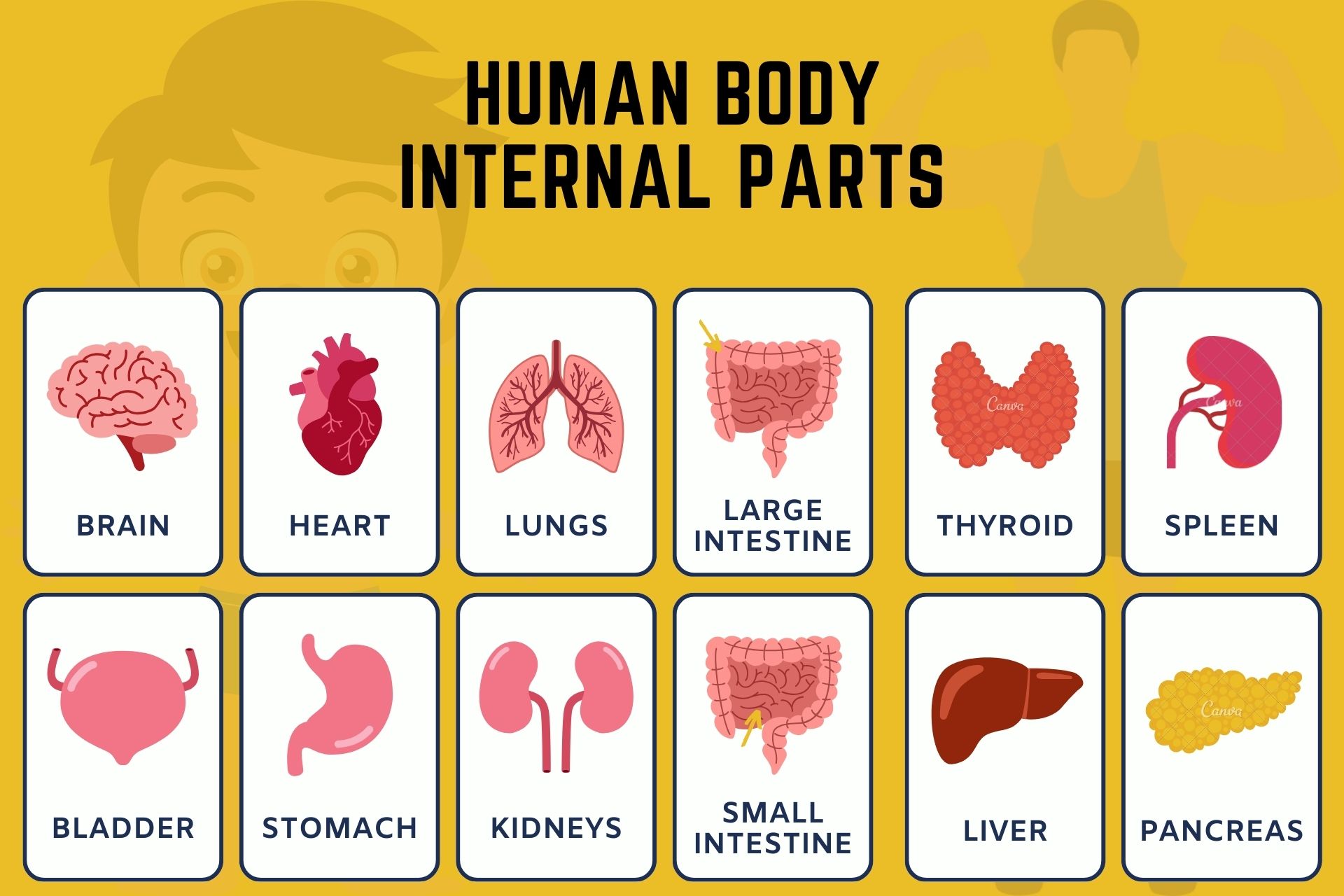
Human Body Internal Parts
External human body parts name
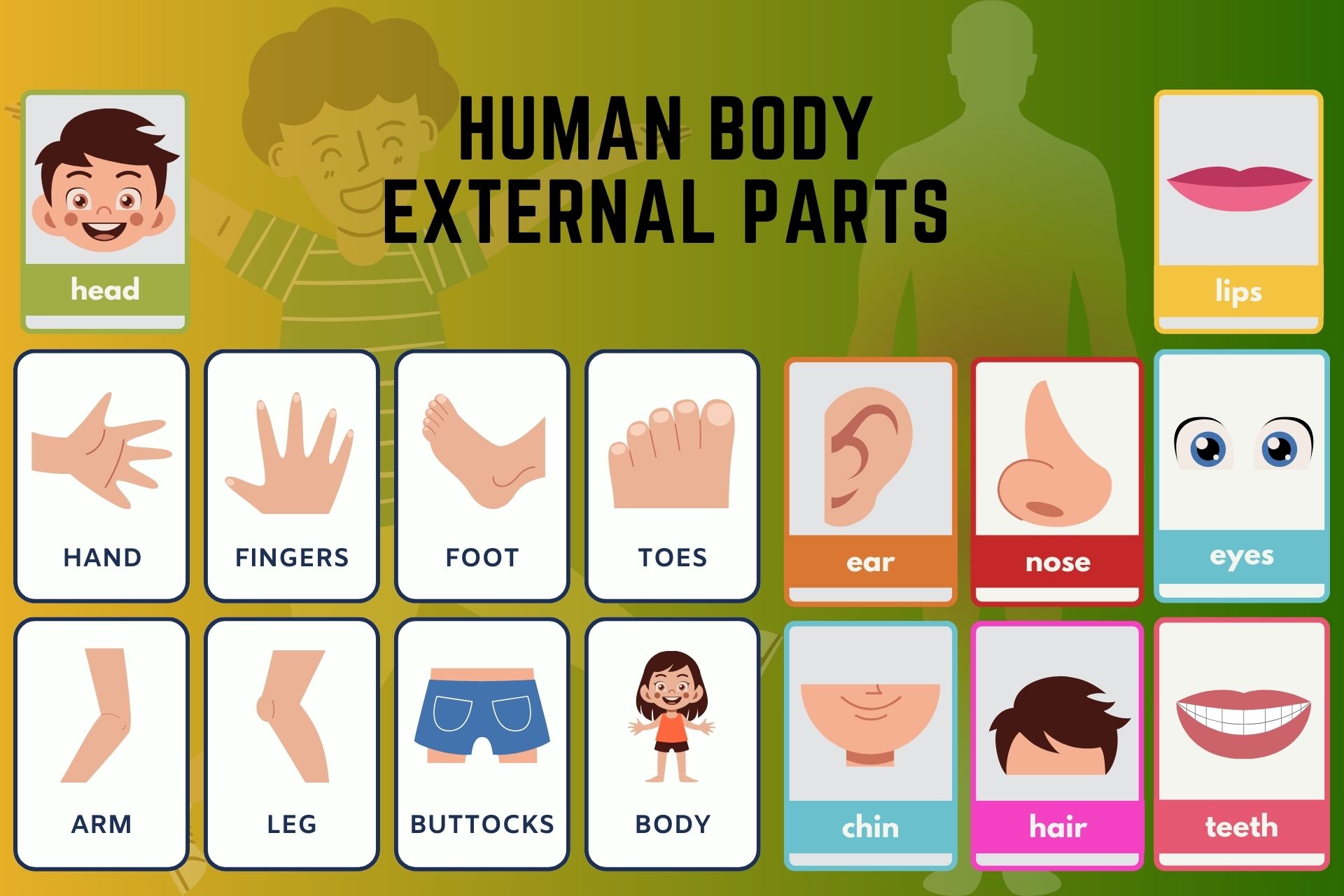
Human Body External Parts
The Skeletal System
| Bone Group | Examples |
|---|---|
| Skull | Cranium, mandible |
| Torso | Ribs, sternum, vertebrae |
| Arm | Humerus, radius, ulna |
| Hand | Carpals, metacarpals, phalanges |
| Pelvis | Ilium, ischium, pubis |
| Leg | Femur, tibia, fibula |
| Foot | Tarsals, metatarsals, phalanges |
The skeletal system provides the structural framework for the body, protects vital organs, and allows for movement in conjunction with the muscular system.
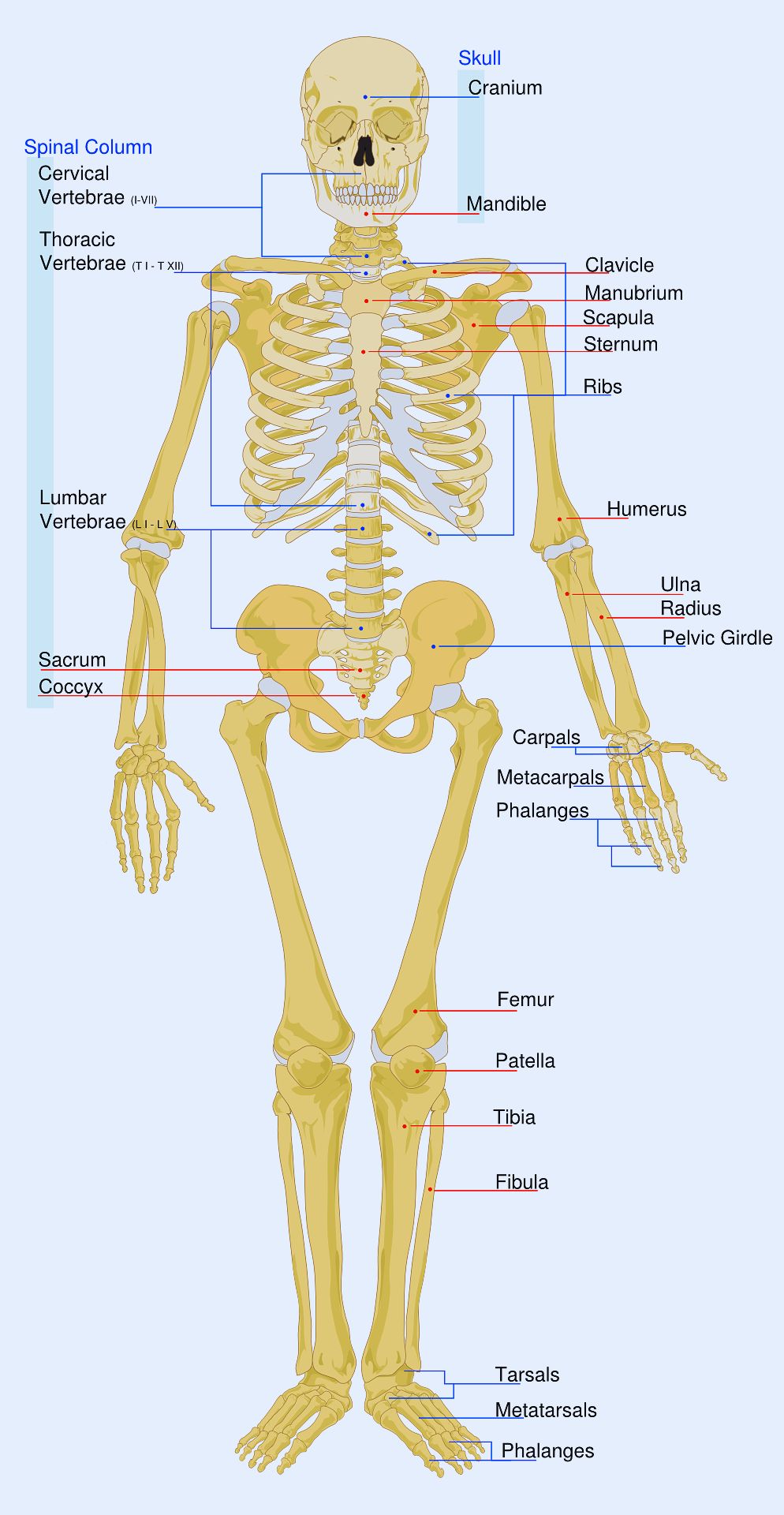
The Circulatory System
| Circulatory Component | Examples |
|---|---|
| Heart Chambers | Atria, ventricles |
| Blood Vessels | Arteries, veins, capillaries |
The circulatory system delivers oxygen and nutrients to tissues and removes waste products through a network of blood vessels.
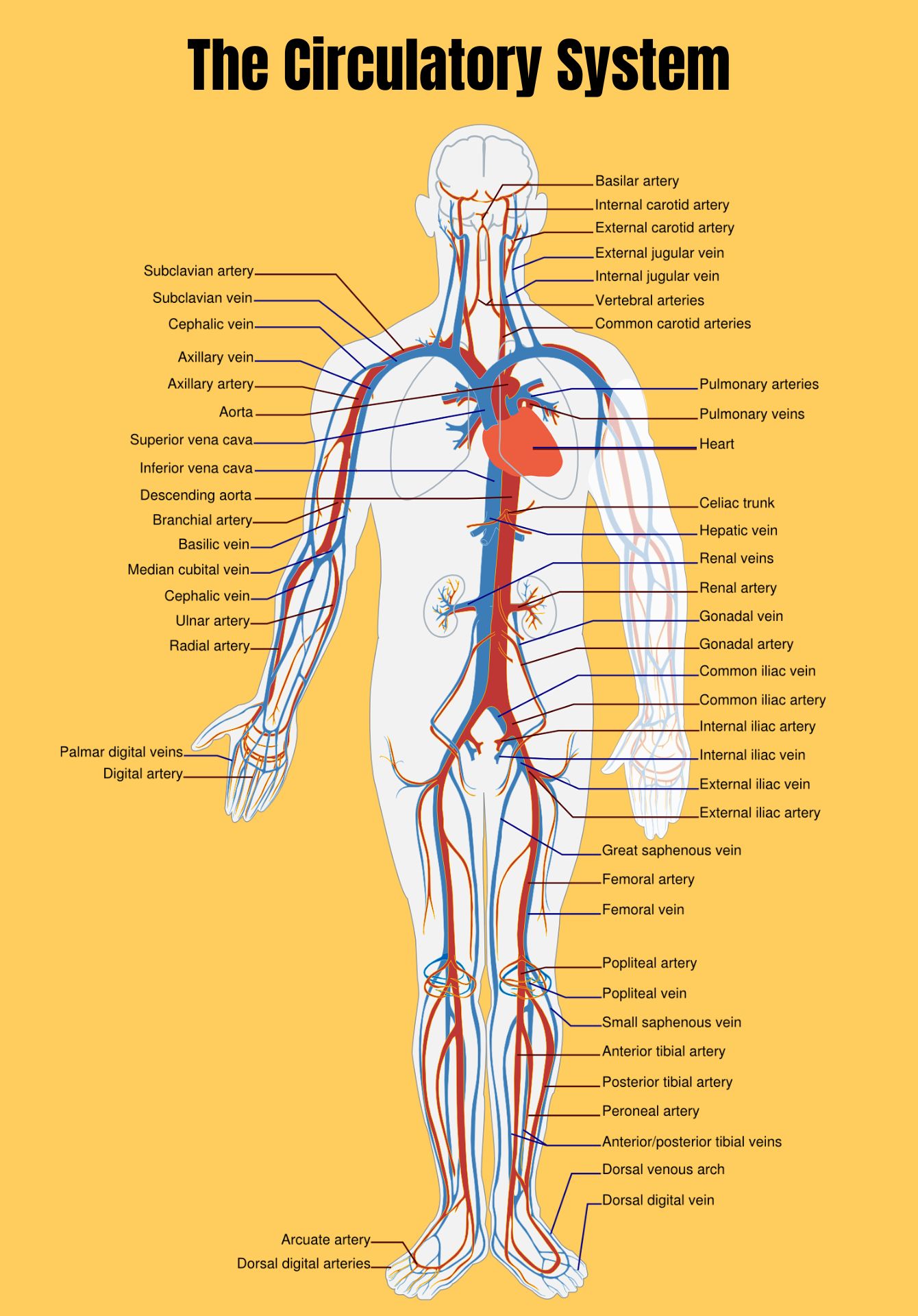
The Circulatory System
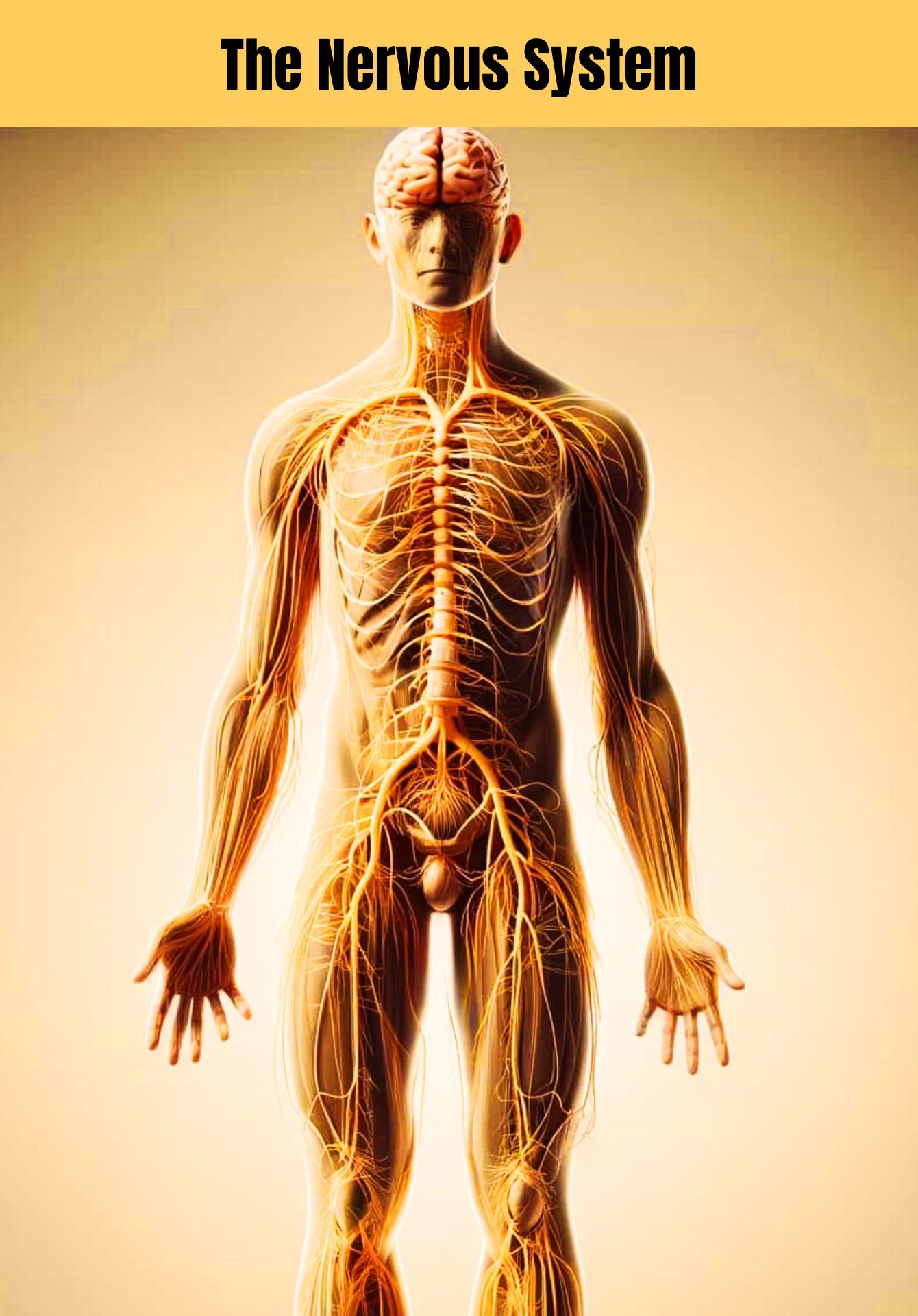
Human Body Nervous System
The Nervous System
| Nervous System Part | Examples |
|---|---|
| Central Nervous System | Brain, spinal cord |
| Peripheral Nervous System | Sensory neurons, motor neurons |
The nervous system controls both voluntary actions like movement and involuntary actions such as breathing, and it is the communication system for sensory information.
The Muscular System
| Muscle Type | Examples |
|---|---|
| Facial Muscles | Orbicularis oris, masseter |
| Torso Muscles | Pectoralis major, latissimus dorsi |
| Arm Muscles | Biceps brachii, triceps brachii |
| Leg Muscles | Quadriceps, hamstrings |
Muscles are responsible for movement, posture, and heat production through contraction. They work with the skeleton to generate force and movement.
The Respiratory System
| Respiratory Part | Examples |
|---|---|
| Upper Respiratory | Nasal cavity, pharynx |
| Lower Respiratory | Larynx, trachea, lungs |
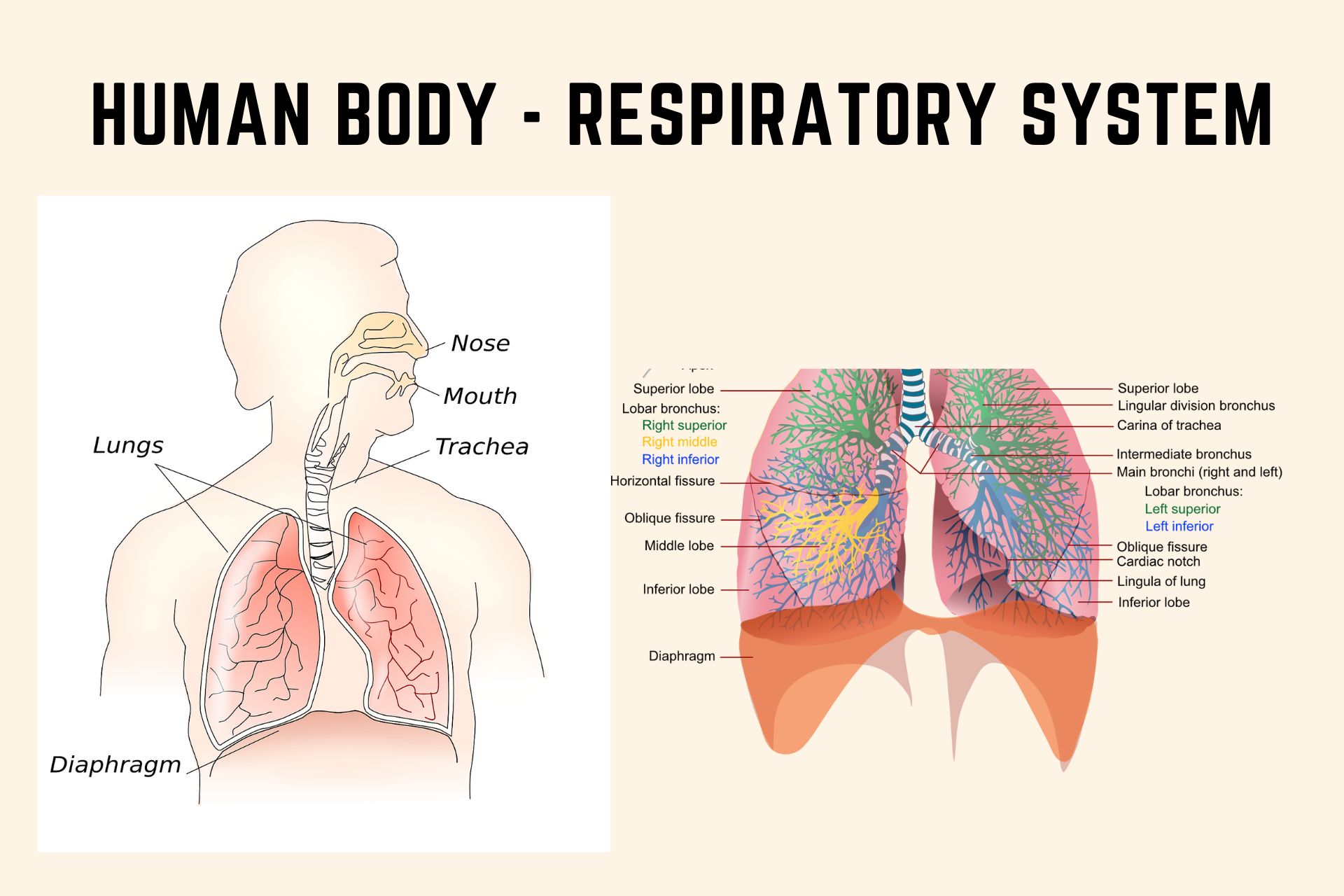
Respiratory System
The respiratory system is responsible for gas exchange, inhaling oxygen, and exhaling carbon dioxide. Here’s a breakdown of the key components of the respiratory system and their roles:
| Respiratory System Part | Function |
|---|---|
| Nose and Nasal Cavity | The main entry and exit point for air the nasal cavity warms, moistens, and filters air as it is inhaled. |
| Mouth (Oral Cavity) | Acts as a secondary entry and exit point for air, particularly during heavy breathing. |
| Pharynx (Throat) | A muscular tube that serves both respiratory and digestive systems it directs air to the larynx and food to the esophagus. |
| Larynx (Voice Box) | Located just below the pharynx it functions in voice production and routes air into the proper channel. |
| Trachea (Windpipe) | A wide, hollow tube that connects the larynx to the bronchi of the lungs it provides a clear airway for air to enter and exit the lungs. |
| Bronchi | The trachea divides into the right and left bronchi each bronchus leads air into each lung’s respective lobes. |
| Bronchioles | Smaller branches of the bronchi that spread throughout the lungs they lead air to the alveoli. |
| Lungs | Two large organs located in the thoracic cavity the primary organs where the exchange of oxygen and carbon dioxide occurs. |
| Alveoli | Tiny air sacs at the end of the bronchioles this is where the gas exchange with the blood takes place. |
| Diaphragm | A large, dome-shaped muscle at the bottom of the lungs it plays a crucial role in breathing by contracting and relaxing to change the pressure in the thorax, which allows air to enter and exit the lungs. |
| Pleura | A double-layered membrane that surrounds each lung and separates them from the thoracic cavity it provides lubrication and protection for the lungs. |
| Intercostal Muscles | Muscles located between the ribs that assist with the expansion and contraction of the chest cavity to facilitate breathing. |
The Digestive System
| Digestive Organ | Examples |
|---|---|
| Upper Digestive Tract | Mouth, esophagus, stomach |
| Lower Digestive Tract | Small intestine, large intestine, rectum |
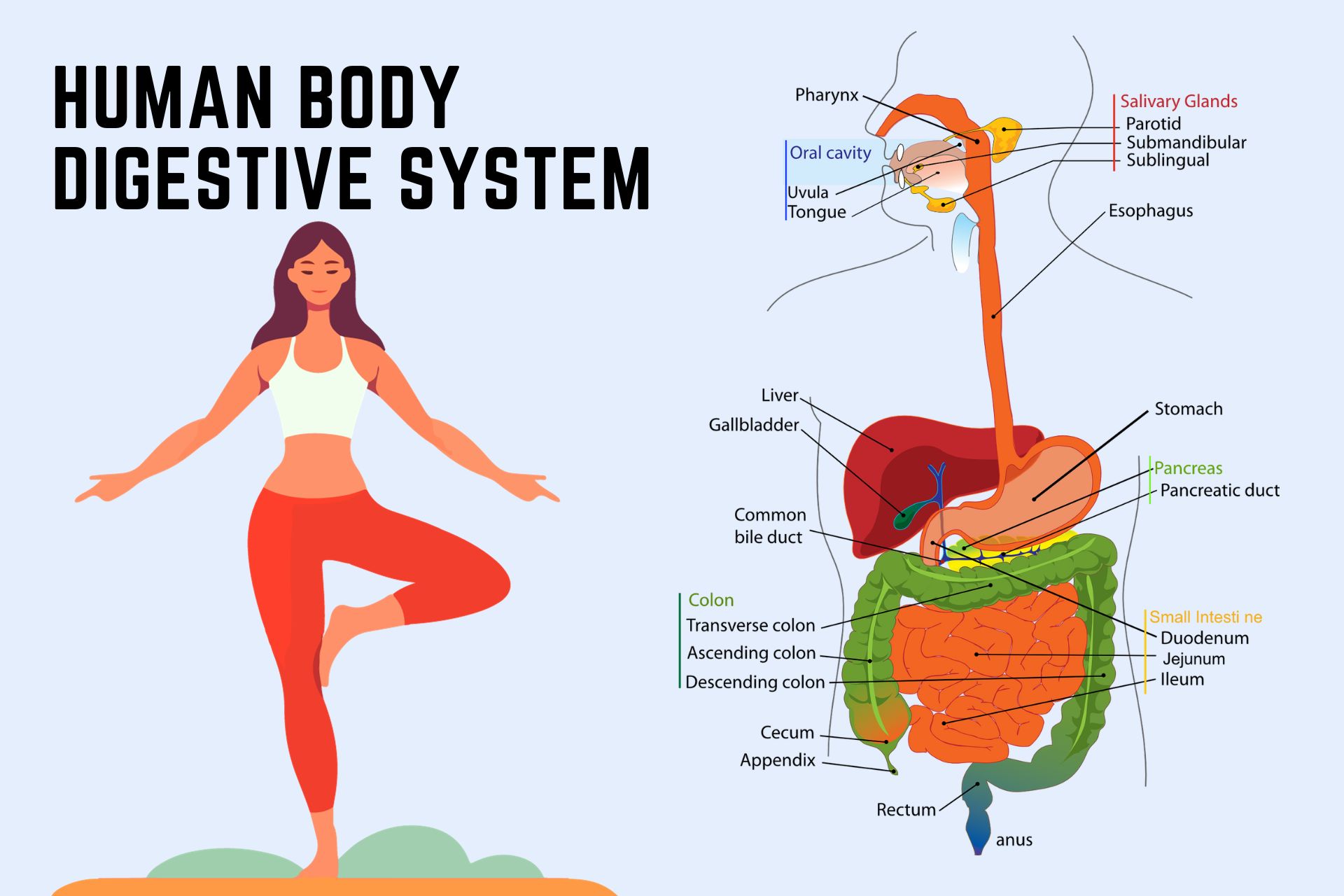
Human Body Digestive System Parts Name
The digestive system breaks down food for nutrient absorption and eliminates waste. Here is a list of the major parts of the digestive system and their functions:
| Digestive System Part | Function |
|---|---|
| Mouth (Oral Cavity) | Where digestion begins; teeth chew food, saliva moistens it, and enzymes begin breaking down carbohydrates. |
| Salivary Glands | Produce saliva which contains enzymes that initiate the breakdown of carbohydrates. |
| Pharynx | Connects the mouth to the esophagus; serves as a pathway for the movement of food. |
| Esophagus | A muscular tube that conveys food from the pharynx to the stomach using rhythmic muscle contractions called peristalsis. |
| Stomach | A sac-like organ where food is mixed with digestive juices and further broken down into a semi-liquid form called chyme. |
| Small Intestine | The primary site of nutrient absorption; chyme is mixed with digestive enzymes and bile to absorb nutrients. |
| Pancreas | Produces digestive enzymes that are secreted into the small intestine to further assist in the breakdown of proteins, carbohydrates, and fats. |
| Liver | Produces bile, which helps digest fats and certain vitamins. The liver also has many other functions, including detoxification of chemicals and metabolism of drugs. |
| Gallbladder | Stores and concentrates bile from the liver, releasing it into the small intestine to aid in digestion. |
| Large Intestine (Colon) | Absorbs water and electrolytes from the remaining indigestible food matter, transmitting the useless waste material from the body. |
| Rectum | The final section of the large intestine, terminating at the anus, where feces are stored before being expelled. |
| Anus | The opening at the end of the digestive tract where feces leave the body. |
The Urinary System
| Urinary Component | Examples |
|---|---|
| Kidneys | Renal cortex, renal medulla |
| Urinary Tract | Ureter, bladder, urethra |
The urinary system removes waste and excess substances from the bloodstream and regulates water balance.
The Endocrine System
| Endocrine Gland | Examples |
|---|---|
| Major Glands | Pituitary gland, thyroid gland, adrenal glands |
The endocrine system produces hormones that regulate metabolism, growth, and development.
The Reproductive System
The human reproductive system is intricately designed for the creation of life. It encompasses organs and structures that facilitate the production of sex cells, the process of fertilization, and, in females, the development of a new individual during pregnancy.
Below are the primary components of the male and female reproductive systems and their functions:
Male Reproductive System
| Body Part | Function |
|---|---|
| Testes (Testicles) | Produce sperm and testosterone, the primary male sex hormone. |
| Scrotum | A sac that holds the testes outside the body to maintain an optimal temperature for sperm production. |
| Epididymis | Stores sperm while they mature and become motile. |
| Vas Deferens | Transports mature sperm to the urethra in preparation for ejaculation. |
| Seminal Vesicles | Produce a fluid rich in sugar that nourishes sperm and forms a portion of ejaculate volume. |
| Prostate Gland | Produces a fluid that, together with seminal vesicle fluid, makes up semen. |
| Urethra | Conducts urine out of the body from the bladder and serves as the channel through which semen is ejaculated. |
| Penis | The organ through which urine and semen leave the body; also plays a key role in sexual intercourse. |
Female Reproductive System
| Body Part | Function |
|---|---|
| Ovaries | Produce eggs (ova) and female hormones estrogen and progesterone. |
| Fallopian Tubes | Transport the ova from the ovaries to the uterus; fertilization typically occurs here. |
| Uterus (Womb) | Nurtures the fertilized ovum that develops into the fetus and holds it till birth. |
| Endometrium | The lining of the uterus, which thickens in preparation for the fertilized egg and sheds during menstruation if pregnancy does not occur. |
| Cervix | The lower part of the uterus that opens into the vagina; it allows the passage of menstrual blood from the uterus, directs sperm into the uterus during intercourse, and dilates during childbirth to allow the passage of the baby. |
| Vagina | The canal that joins the cervix to the outside of the body; it is also known as the birth canal since it is where the baby exits the body during childbirth. |
| Vulva | Refers to the external genital organs of the female, including the labia majora, labia minora, clitoris, and the openings of the vagina and urethra. |
| Mammary Glands (Breasts) | Although not part of the reproductive tract, they are considered a part of the reproductive system due to their role in feeding an infant. They produce milk after childbirth. |
The Integumentary System
| Integumentary Part | Examples |
|---|---|
| Skin Layers | Epidermis, dermis |
| Appendages | Hair, nails |
The integumentary system protects the body from the external environment, regulates temperature, and provides sensory information.
Sensory Organs
| Sensory Organ | Function |
|---|---|
| Eyes | Vision |
| Ears | Hearing and balance |
| Nose | Smell |
| Tongue | Taste |
| Skin | Touch |
Sensory organs are specialized for the reception of external stimuli and contribute to the body’s homeostasis.
Comprehensive table listing various body parts name in both English and Hindi, providing a broad view of human anatomy.
| English | Hindi |
|---|---|
| Head | सिर (Sir) |
| Hair | बाल (Baal) |
| Forehead | माथा (Maatha) |
| Brain | मस्तिष्क (Mastishk) |
| Eye | आंख (Aankh) |
| Eyebrow | भौंह (Bhaunh) |
| Eyelash | पलक (Palak) |
| Ear | कान (Kaan) |
| Nose | नाक (Naak) |
| Cheek | गाल (Gaal) |
| Mouth | मुंह (Munh) |
| Lip | होंठ (Honth) |
| Tooth | दांत (Daant) |
| Tongue | जीभ (Jeebh) |
| Throat | गला (Gala) |
| Neck | गर्दन (Gardan) |
| Shoulder | कंधा (Kandha) |
| Arm | बांह (Baanh) |
| Elbow | कोहनी (Kohni) |
| Wrist | कलाई (Kalai) |
| Hand | हाथ (Haath) |
| Fingers | उंगलियां (Ungliyan) |
| Thumb | अंगूठा (Angootha) |
| Nail | नाखून (Nakhun) |
| Chest | छाती (Chhaati) |
| Breast | स्तन (Stan) |
| Heart | दिल (Dil) |
| Stomach | पेट (Pet) |
| Waist | कमर (Kamar) |
| Back | पीठ (Peeth) |
| Abdomen | पेट (Pet) |
| Hip | कूल्हा (Koolha) |
| Buttocks | नितम्ब (Nitamb) |
| Thigh | जांघ (Jangh) |
| Knee | घुटना (Ghutna) |
| Leg | पैर (Pair) |
| Ankle | टखना (Takhna) |
| Foot | पैर (Pair) |
| Heel | एड़ी (Edee) |
| Toes | पैर की उंगलियां (Pair ki Ungliyan) |
| Skin | त्वचा (Twacha) |
| Muscle | मांसपेशी (Maanspeshi) |
| Bone | हड्डी (Haddi) |
| Blood | खून (Khoon) |
| Liver | जिगर (Jigar) |
| Kidney | गुर्दा (Gurda) |
| Lungs | फेफड़े (Phephade) |
| Intestine | आंत (Aant) |
This above table includes a range of body parts name from head to toe, encompassing both the external and internal components of human anatomy, along with their names in both English and Hindi. It serves as a quick reference for educational purposes, language translation, or simply to enrich one’s vocabulary in both languages.
FAQs about Human Anatomy
Q1. How many bones are in the human body?
An adult human body typically has 206 bones.
Q2. Can all muscles be controlled voluntarily?
No, some muscles, like the heart muscle, operate involuntarily.
Q3. Why is the nervous system divided into two parts?
The central nervous system processes information, while the peripheral nervous system transmits signals between the central nervous system and the rest of the body.
Q4. How does blood circulate through the body?
The heart pumps blood through arteries to various body parts, returning to the heart through veins.
Q5. What is the largest organ in the body?
The skin is the body’s largest organ, encompassing the entire exterior of the body and serving multiple roles.
Conclusion
Understanding the names and functions of body parts is vital for comprehending how the human body operates as a whole. This knowledge is foundational for medical professionals but also enriches the education of anyone interested in the remarkable mechanics of their own body.
As we continue to learn more about human anatomy, the list of named parts and their interconnected functions expands, reflecting the ongoing exploration into the complexity of the human form.










